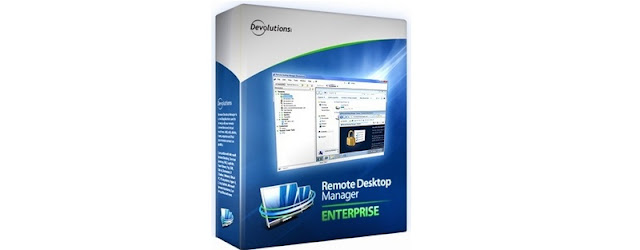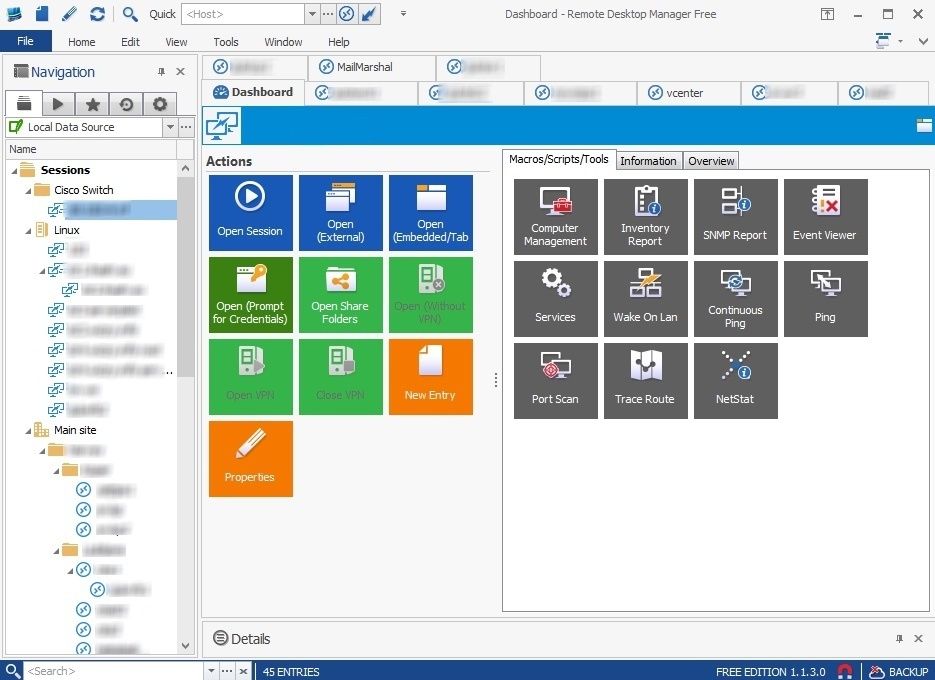

- Devolutions remote desktop manager how to#
- Devolutions remote desktop manager generator#
- Devolutions remote desktop manager update#
%Root%\SOFTWARE\Policies\Devolutions\RemoteDesktopManager\DisableLocalDriveSharing %Root%\SOFTWARE\Policies\Devolutions\RemoteDesktopManager\DisableExecuteScriptsViaTerminalĭisable local drive sharing of RDP entries %Root%\SOFTWARE\Policies\Devolutions\RemoteDesktopManager\DisableAzureInterativePersitentLogin %Root%\SOFTWARE\Policies\Devolutions\RemoteDesktopManager\CheckForServerCertificateRevocationĭisable Azure interactive persistent login %Root%\SOFTWARE\Policies\Devolutions\RemoteDesktopManager\ApplyForcedPassword TemplateInPasswordGeneratorTool
Devolutions remote desktop manager generator#
%Root%\SOFTWARE\Policies\Devolutions\RemoteDesktopManager\AlwaysPromptForPassphraseĪpply forced password template in Password Generator tool %Root%\SOFTWARE\Policies\Devolutions\RemoteDesktopManager\ForceUpdatingOnceAMonthįorce the user to always be prompted for the passphrase while connecting to a data source that is protected by a Passphrase Security Provider %Root%\SOFTWARE\Policies\Devolutions\RemoteDesktopManager\ForceUpdatingAllUpdateAndBeta %Root%\SOFTWARE\Policies\Devolutions\RemoteDesktopManager\ForceUpdatingAllUpdate %Root%\SOFTWARE\Policies\Devolutions\RemoteDesktopManager\ForceUpdatingMajorUpdate %Root%\SOFTWARE\Policies\Devolutions\RemoteDesktopManager\ForceDefaultConfigurationLoading

%Root%\SOFTWARE\Policies\Devolutions\RemoteDesktopManager\ForceSystemProxyįorce the loading of the default.cfg file %Root%\SOFTWARE\Policies\Devolutions\RemoteDesktopManager\ForceRefreshBeforeEditEntry %Root%\SOFTWARE\Policies\DevolutionsRemoteDesktopManager\DisableX86 %Root%\SOFTWARE\Policies\DevolutionsRemoteDesktopManager\DisableX64 %Root%\SOFTWARE\Policies\Devolutions\RemoteDesktopManager\DisableRegisterProductĭisable the 圆4 edition of the application %Root%\SOFTWARE\Policies\Devolutions\RemoteDesktopManager\DisableUpdateĭisable the Register Product in the Help menu %Root%\SOFTWARE\Policies\Devolutions\RemoteDesktopManager\DisableAutoUpdate
Devolutions remote desktop manager update#
%Root%\SOFTWARE\Policies\Devolutions\RemoteDesktopManager\DisableAnalyticsĭisable the application automatic update check

Please refer to Microsoft’s online documentation to make the best choice for your organization’s requirements. Please note that for each GPO’s corresponding Registry Key, the %Root% can either be HKEY_LOCAL_MACHINE or HKEY_CURRENT_USER, depending on how you want to enforce the policy. Table of policiesīelow you will find all of the GPOs that are currently supported in RDM. If Remote Desktop Manager is open when you make this change, then you will need to restart it in order for the new policy to take effect. Right-click the specific policy, edit it accordingly, and save.In the Sessions folder, locate the specific policy that you wish to change.Open your Group Policy Editor, and go to Computer Configuration -> Administrative Templates -> Devolutions -> Remote Desktop Manager -> Sessions.Paste the Devolutions.adml file in C:\Windows\PolicyDefinitions\en-US.Go to C:\Program Files (x86)\Devolutions\Remote Desktop Manager\Policies\en-US.Paste the Devolutions.admx file in the root of C:\Windows\PolicyDefinitions.By default, the path is C:\Program Files (x86)\Devolutions\Remote Desktop Manager\Policies You will find it in the policies subfolder.īefore you can manage GPOs in RDM, you first need to list them in the Local Group Policy Editor. Remote Desktop Manager includes an administrative template file (.admx), which describes the policies that are offered.

Devolutions remote desktop manager how to#
How to List RDM GPOs in the Local Group Policy Editor Below you will find a table that identifies the registry key for each policy setting. In this case, however, proper Access Control Lists (ACLs) must be put in place to prevent users from modifying registry settings. They contain registry keys that can also be set on computers that are not joined to domains. In essence, Administrative Templates are registry settings that are enforced by domains. Group policy (GPO) is a tool that enables your organization to enforce global settings on all computers, and at the same time, harden Remote Desktop Manager security. And you know what else makes life so much easier? Using Administrative Templates in Remote Desktop Manager! About Administrative TemplatesĪdministrative Templates facilitate the management of registry-based policy settings, which can be applied on the computer and/or the user configuration. Some things in life make our life easier, like owning a rumba when you have a messy dog, an IoT fridge that automatically orders groceries when you’re running low, or this awesome wine glass for those long winter nights (especially during a lockdown).


 0 kommentar(er)
0 kommentar(er)
